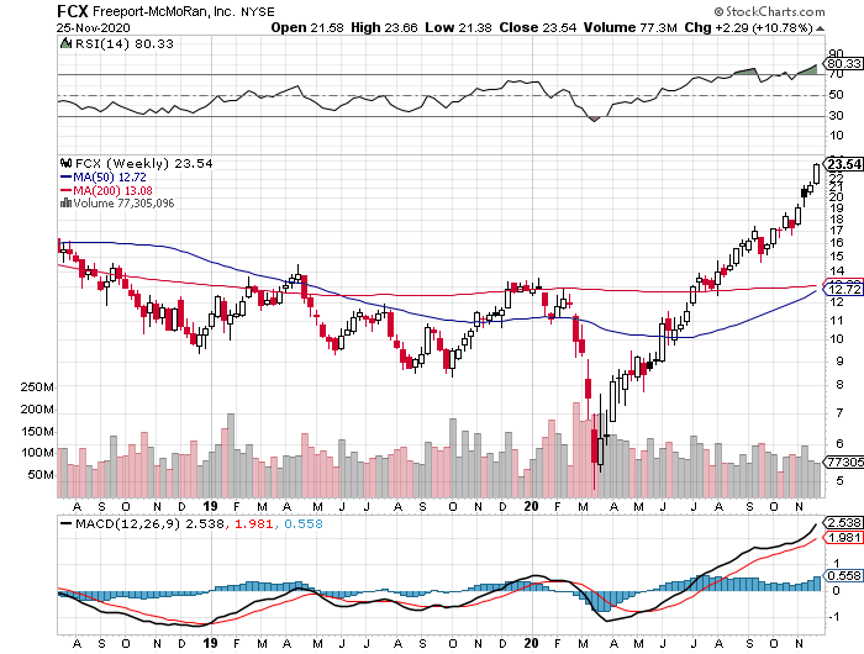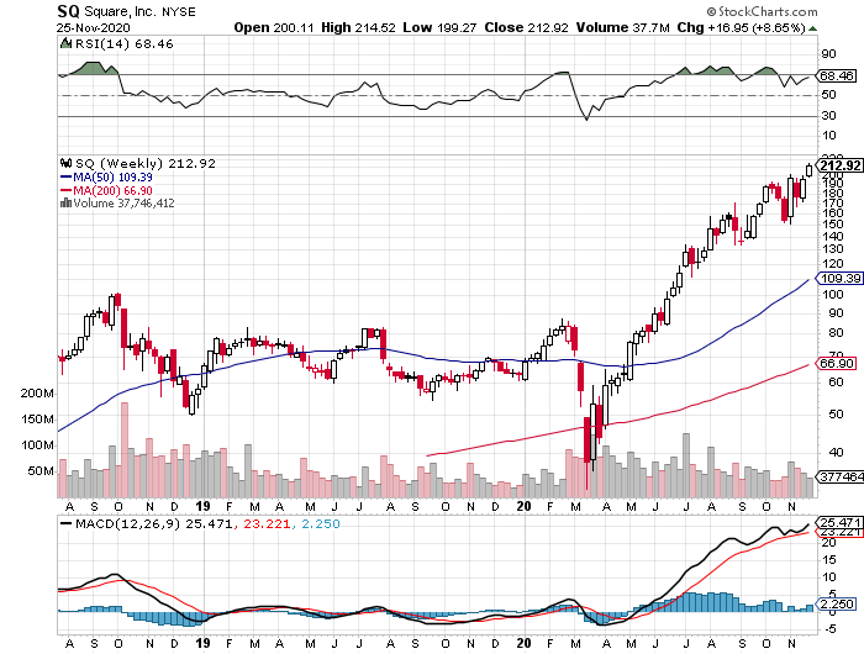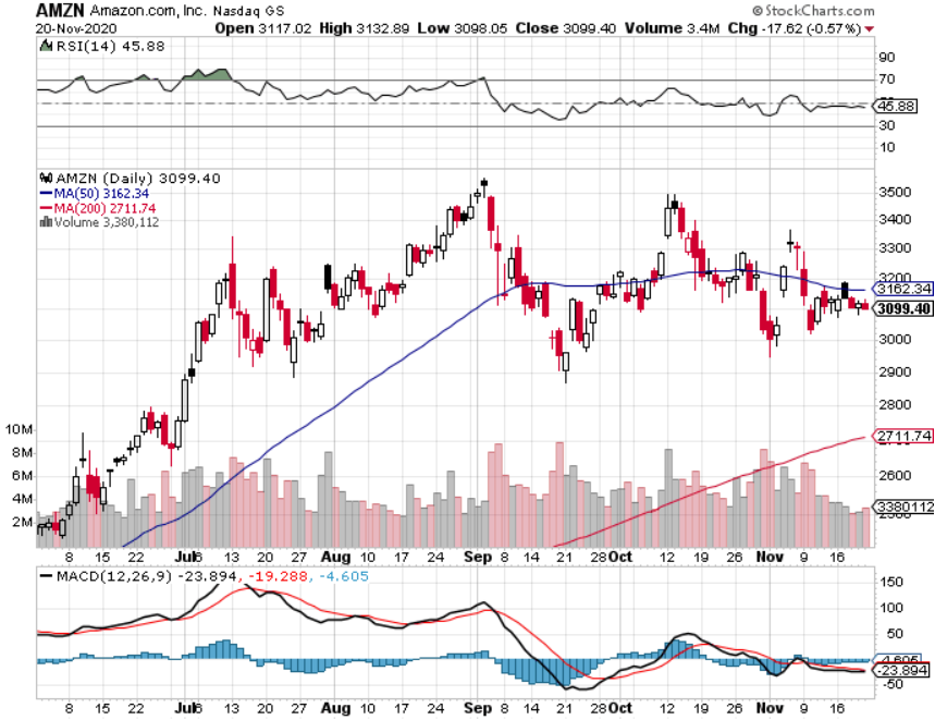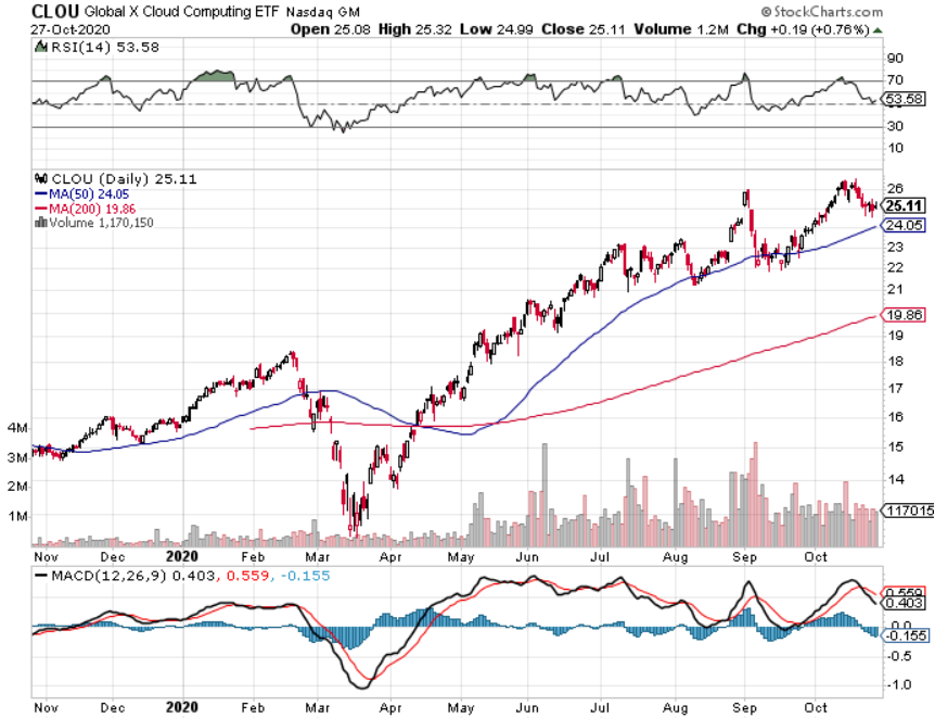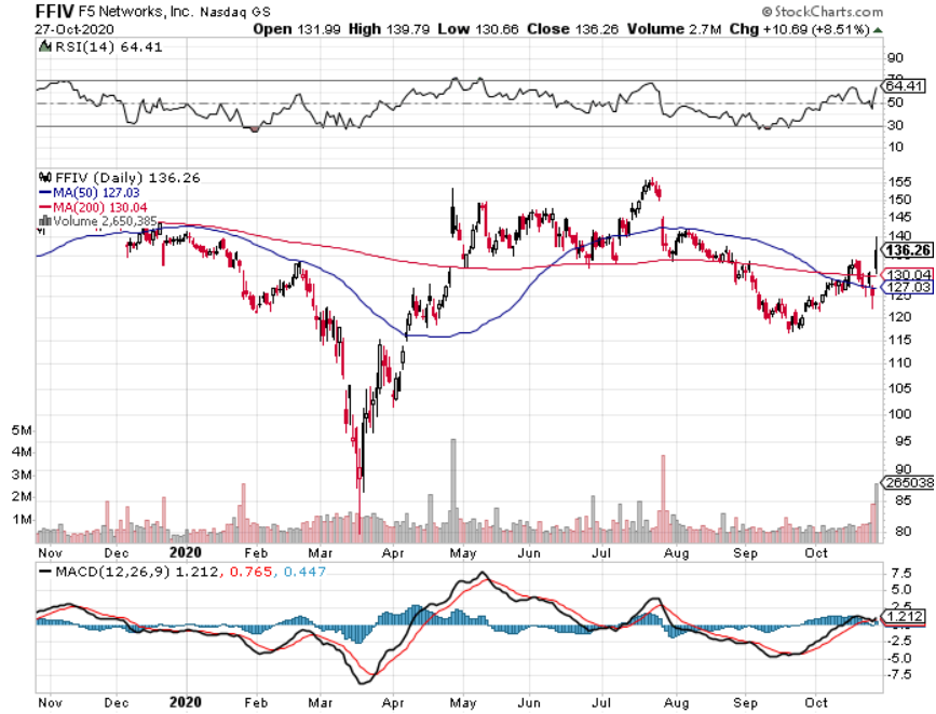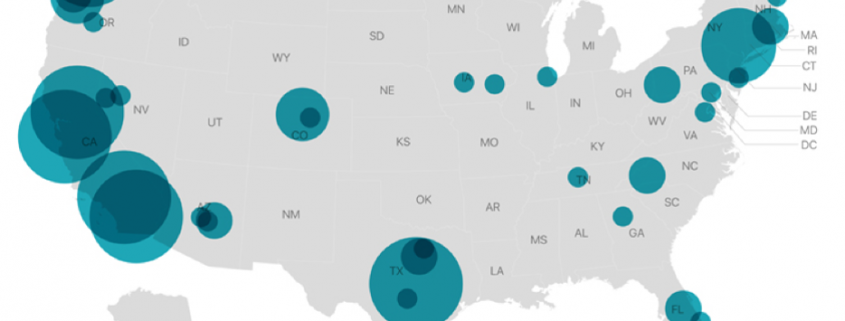Below please find subscribers’ Q&A for the November 25 Mad Hedge Fund Trader Global Strategy Webinar broadcast from Silicon Valley, CA with my guest and co-host Bill Davis.
Q: Is gold (GLD) still a hold?
A: Long term yes; short term no. Short term, cash is being drained out of gold in order to buy Bitcoin, just like silver. And once Bitcoin peaks, which could be today or tomorrow when it hits 20,000, then you could get a round of profit-taking and a nice little pop in gold. So, it's basically moving totally counter-cyclically to Bitcoin and the other cryptocurrencies right now.
(Note: since this webinar, Bitcoin has crashed by $3,000)
Q: A competitor of yours claims that asymptomatic transmission of COVID does not occur.
A: I would bet money that person does not have a medical degree. Asymptomatic transmission occurs in almost all diseases, so why COVID would be an exception is beyond me. I suggest that somebody is trying to sell newsletters at your expense with zero knowledge about the topic. Ask him to kiss a Covid victim. This is common in my industry where 99% of the people are crooks. This is also an example of the vast amounts of information that have been spread during an election year.
Q: Will you take a vaccine when it’s out or will you let others try it first?
A: Actually, by the time the public gets the vaccine, more than a million people will have already tried it, so I think it will be fairly safe. I am probably already the most vaccinated person on the planet; I've had flu shots every year for 40 years, so I will happily try it out. At my age, I have little to lose. And I would like to travel again, and that’s going to be a requirement for international travel. I am worried there could be long term side effects that we’ve seen with other drugs in the past, like all future children being born without arms and legs, which is what happened in the 1950s with Thalidomide.
Q: If the Senate flips to the Democrats, how do you see it affecting the market?
A: It doesn’t really affect the market overall; what it will do is affect sector reallocation. Solar, alternative energy and ESG companies do a lot better in A Democratic Senate, and energy oil companies do a lot worse. All you do is short the losers and buy the winners; it really makes no difference who wins. Most of the big conflicts over issues these days are social ones that don’t affect the market.
Q: Where do you see Tesla (TSLA) by the end of the year?
A: Well, this morning, it’s at an all-time high of $565. It looks like it wants to take a run at $600, and then we will be up 50% from where the news was announced that it was joining the S&P 500. That seems to me like a heck of a move on no real fundamental news. During this news, the market completely ignores a Model X recall and a Model Y pan from Consumer Reports. I would be inclined to take profits there or at least roll the strikes up on my options positions.
Q: What’s a good stock to play a commodity recovery?
A: You can’t do any better than Freeport-McMoRan (FCX), which I’ve been following for almost 50 years since I covered it for the Australian Financial Review newspapers.
Q: Will Salesforce (CRM) hold?
A: Yes, it’s just a matter of time before we break out to substantial new highs, and this is a stock that could double next year.
Q: What brokers do you suggest?
A: I would pick tastytrade. Click here for their site.
Q: Is CVS (CVS) a good buy?
A: I would say yes; a billion Covid-19 vaccine doses will need to be distributed next year. You can't do that without all the drug companies participating big time.
Q: Does Trump have a chance to win in his lawsuits?
A: It’s more likely that I will be elected the next Miss America; so, I wouldn’t place any bets on that. Some 30 consecutive Republican judges ruling against him does not augur well for his future.
Q: Would you buy any LEAPS here (Long Term Equity Participation Securities)?
A: Only in special one-off situations in the domestic stocks that haven’t moved in ten years. There are a lot of those out there now that I have been recommending. Those are all fertile territory for LEAPs, especially going out 2 years where you get the maximum bang for the buck and a 1,000% return. Don’t touch LEAPs in technology stocks here, and don’t touch Tesla in LEAPs.
Q: What’s your outlook on Southwest Air (LUV)?
A: I like it; it’s one of the healthiest domestic airlines most likely to come back.
Q: Are you going to update your long-term portfolio?
A: Yes, but I only update it twice a year and my next turn is on January 22. If you bought the last update on July 22, you made a fortune getting into Freeport McMoRan at $12 (it’s now $23), CRISPER Therapeutics at $80 (CRSP) (it’s now $110), and Square (SQ) at $110 (the current is $212). You can find it by logging into www.madhedgefundtrader.com, going to My Account, clicking on Global Trading Dispatch, on the drop-down menu, click on the Long-Term Portfolio tab and then clicking on the red tab for the Long-Term Portfolio. That lets you download an excel spreadsheet.
Q: Do you have any LEAPS to suggest now?
A: I only put out portfolios of LEAPS at giant market bottoms like we had in March. Then I put out lists and lists of LEAPS. At all-time highs, it’s not good LEAPS territory, except for specific names. So, if you want to get involved in that on a regular basis, I suggest you sign up for our Mad Hedge Concierge Service. There they are making millions of dollars a week right now.
Q: Where does the US dollar (UUP) go from here?
A: Straight down; the outlook for the buck couldn't be worse. I would be selling short the US dollar like crazy right now except that there are much better trades in US equities.
Q: Just to be clear, there’s no voter fraud?
A: There’s probably never been an election in US history without voter fraud on all sides; it’s just a question of who’s better at it. In the 1948 Texas Democratic Party runoff, back when the party owned Texas, Lyndon Johnson won by 87 votes out of 988,295 cast. It was later found that in five Hispanic-dominated counties that bordered Mexico, everyone had voted 100% for Johnson ….in alphabetical order. Johnson then took the seat with a 66% margin and went on to dominate the US Senate. I remember in the 1960 election, all the military absentee votes were sent flying around in circles over the Atlantic so Kennedy would win; that’s a story that’s been out there for a long time.
Q: You said stay away from other EVs except for Tesla?
A: A few have gone crazy this week, but that doesn’t mean they can actually make a car. So, you might get lucky on a quick trade on some of these, but long term, I don’t think any of the other non-Tesla EV companies are going to make it except for General Motors, which is plowing $27 billion into the sector. Even if (GM) may be able to put out a lot of cars, but they won’t be able to make very much money at it because they’re nowhere near the neighborhood of Tesla with the software where all the money is made.
Q: As the dollar gets weaker, will you expand your international stock picks?
A: Yes, we put out the first one in a long time, Ali Baba (BABA), on Monday, and we’ll be adding to that a bunch. I think the dollar could be weak for 5 or 10 years, a lot like it was in the 1970s.
Q: What’s your outlook for silver (SLV)?
A: Same as for gold (GLD). Quiet for the short term, double for the long term.
Q: Favorite names in biotech?
A: For that, you really need to subscribe to the biotech letter; we’re giving you two names a week there and all of them have done great. But another one might be Thermo Fisher (TMO), which seems to double every time I recommend it. It’s a great takeover target too.
Q: Is there any possibility of a 30% dip in the market (SPY) in 2021?
A: No, I don’t see more than a 10% dip in 2021. The tailwinds now are gale-force, generational, and will run for a decade.
Q: How do you sell the US dollar rally?
A: You buy all the ETFs that we cover in our foreign exchange sections. Those are the Australian dollar (FXA), the Euro (FXE), the Japanese Yen (FXY), the British pound (FXB), and the Chinese Yuan (CYB). Those are five ETFs that will do well on a weak dollar for the next several years.
Q: What about the Invesco Solar ETF TAN?
A: We have been recommending (TAN) for many years and it has done spectacularly well. I still love it long term, but it’s had one heck of a run; it’s up 300% from the March low. I think the entire country is about to have a solar explosion because the costs are now quite simply less than for oil. It’s an economic question. We are going to an all-Electric America.
Q: What do you think about LEAPS on gold?
A: It’s not really LEAPs territory yet, but on a two-year view, you’d have to do well on gold LEAPs.
Q: Is the Invesco DB US Dollar Index Bullish Fund (UUP) good to buy?
A: You should be looking to short the UUP. It’s a long dollar basket which we think will do terribly.
Good Luck and Stay Healthy.
John Thomas
CEO & Publisher
The Diary of a Mad Hedge Fund Trader






